第21章 II(5)
So much ridicule has been thrown upon the pretended powers of the minute doses that I shall only touch upon this point for the purpose of conveying, by illustrations, some shadow of ideas far transcending the powers of the imagination to realize. It must be remembered that these comparisons are not matters susceptible of dispute, being founded on simple arithmetical computations, level to the capacity of any intelligent schoolboy. A person who once wrote a very small pamphlet made some show of objecting to calculations of thus kind, on the ground that the highest dilutions could easily be made with a few ounces of alcohol. But he should have remembered that at every successive dilution he lays aside or throws away ninety-nine hundredths of the fluid on which he is operating, and that, although he begins with a drop, he only prepares a millionth, billionth, trillionth, and similar fractions of it, all of which, added together, would constitute but a vastly minute portion of the drop with which he began. But now let us suppose we take one single drop of the Tincture of Camomile, and that the whole of this were to be carried through the common series of dilutions.
A calculation nearly like the following was made by Dr. Panvini, and may be readily followed in its essential particulars by any one who chooses.
For the first dilution it would take 100 drops of alcohol.
For the second dilution it would take 10;000 drops, or about a pint.
For the third dilution it would take 100 pints.
For the fourth dilution it would take 10,000 pints, or more than 1,000 gallons, and so on to the ninth dilution, which would take ten billion gallons, which he computed would fill the basin of Lake Agnano, a body of water two miles in circumference. The twelfth dilution would of course fill a million such lakes. By the time the seventeenth degree of dilution should be reached, the alcohol required would equal in quantity the waters of ten thousand Adriatic seas. Trifling errors must be expected, but they are as likely to be on one side as the other, and any little matter like Lake Superior or the Caspian would be but a drop in the bucket.
Swallowers of globules, one of your little pellets, moistened in the mingled waves of one million lakes of alcohol, each two miles in circumference, with which had been blended that one drop of Tincture of Camomile, would be of precisely the strength recommended for that medicine in your favorite Jahr's Manual, against the most sudden, frightful, and fatal diseases!" [In the French edition of 1834, the proper doses of the medicines are mentioned, and Camomile is marked IV. Why are the doses omitted in Hull's Translation, except in three instances out of the whole two hundred remedies, notwithstanding the promise in the preface that "some remarks upon the doses used may be found at the head of each medicine"? Possibly because it makes no difference whether they are employed in one Homoeopathic dose or another; but then it is very singular that such precise directions were formerly given in the same work, and that Hahnemann's "experience" should have led him to draw the nice distinctions we have seen in a former part of this Lecture (p. 44).]
And proceeding on the common data, I have just made a calculation which shows that this single drop of Tincture of Camomile, given in the quantity ordered by Jahr's Manual, would have supplied every individual of the whole human family, past and present, with more than five billion doses each, the action of each dose lasting about four days.
Yet this is given only at the quadrillionth, or fourth degree of potency, and various substances are frequently administered at the decillionth or tenth degree, and occasionally at still higher attenuations with professed medicinal results. Is there not in this as great an exception to all the hitherto received laws of nature as in the miracle of the loaves and fishes? Ask this question of a Homoeopathist, and he will answer by referring to the effects produced by a very minute portion of vaccine matter, or the extraordinary diffusion of odors. But the vaccine matter is one of those substances called morbid poisons, of which it is a peculiar character to multiply themselves, when introduced into the system, as a seed does in the soil. Therefore the hundredth part of a grain of the vaccine matter, if no more than this is employed, soon increases in quantity, until, in the course of about a week, it is a grain or more, and can be removed in considerable drops. And what is a very curious illustration of Homoeopathy, it does not produce its most. characteristic effects until it is already in sufficient quantity not merely to be visible, but to be collected for further use. The thoughtlessness which can allow an inference to be extended from a product of disease possessing this susceptibility of multiplication when conveyed into the living body, to substances of inorganic origin, such as silex or sulphur, would be capable of arguing that a pebble may produce a mountain, because an acorn can become a forest.